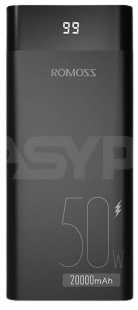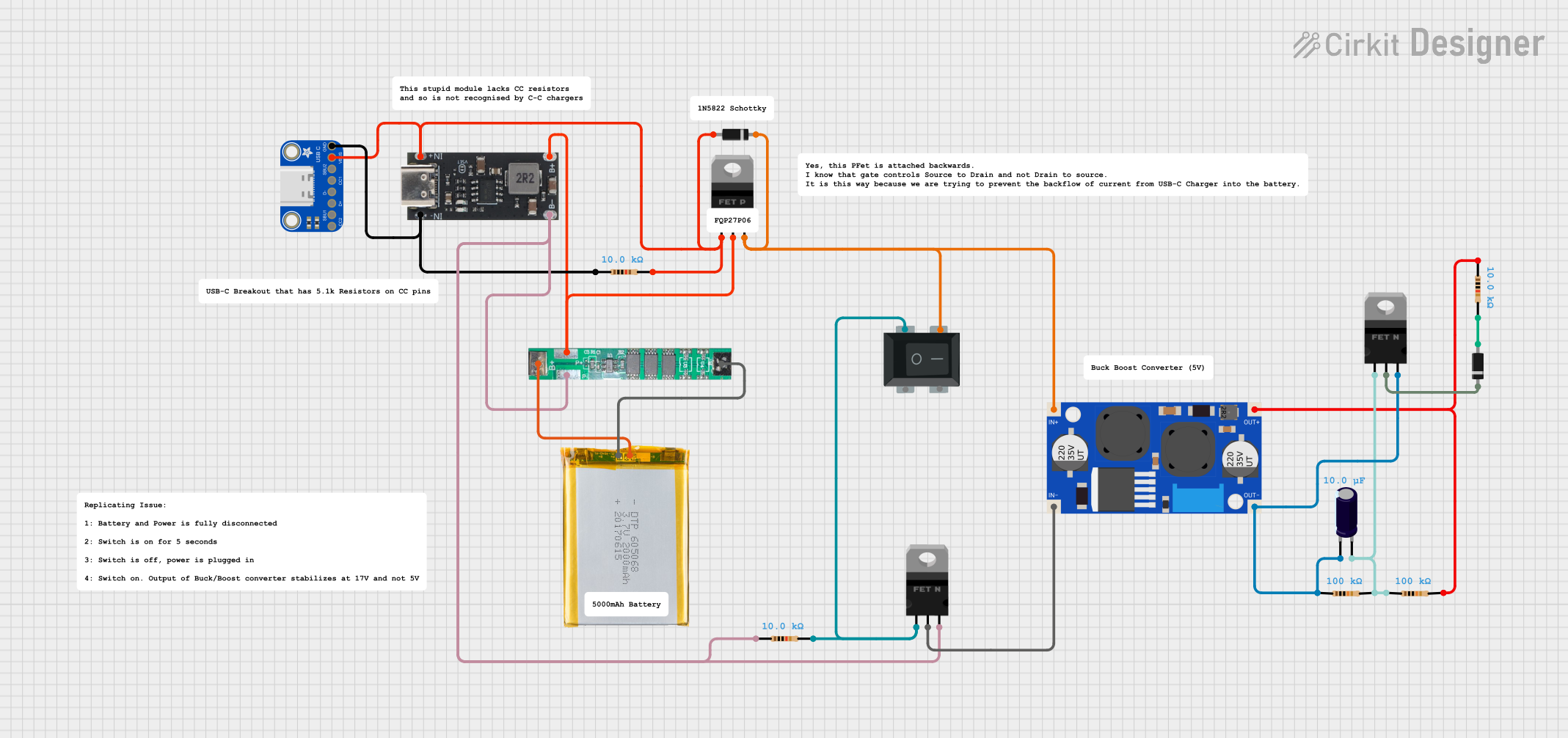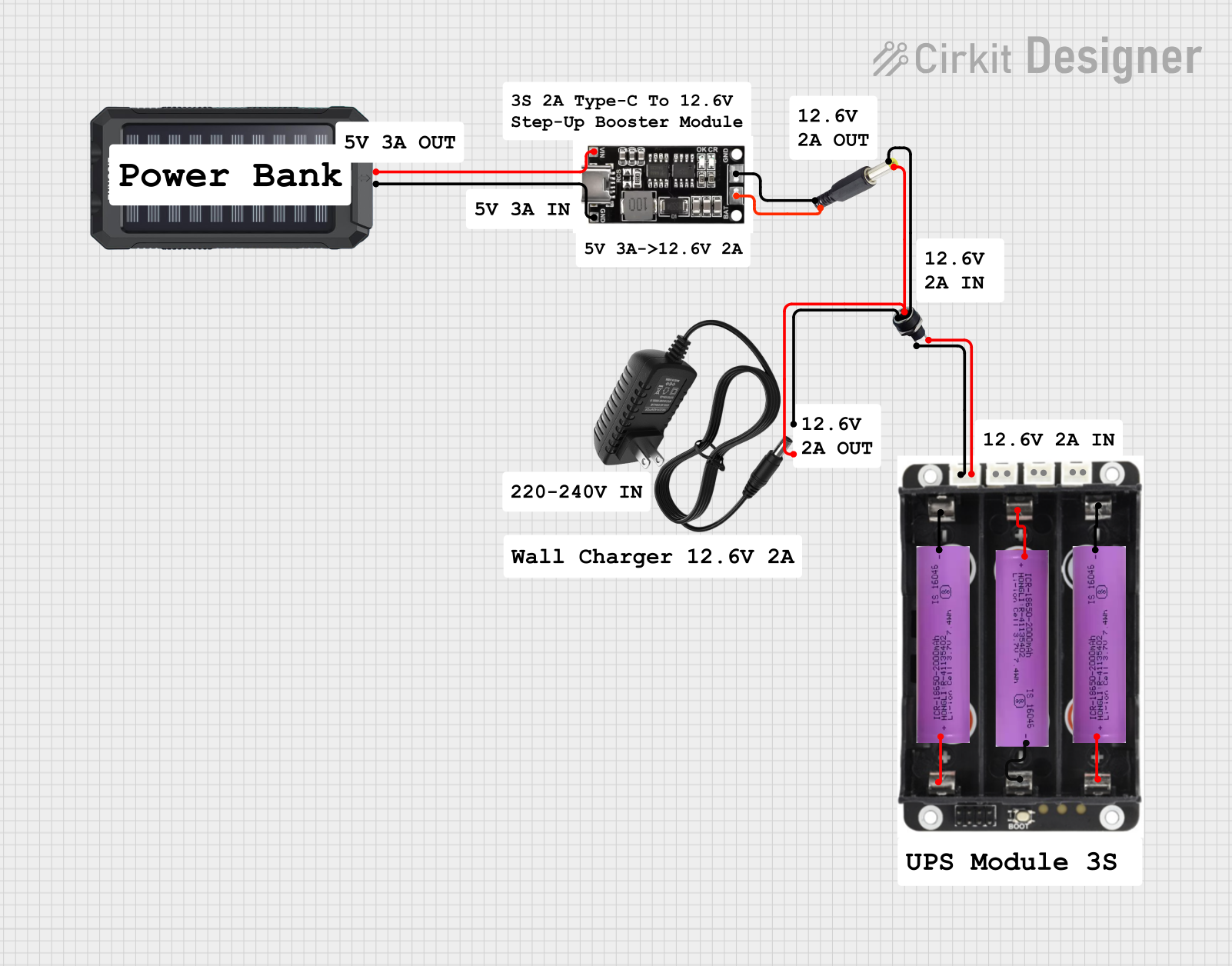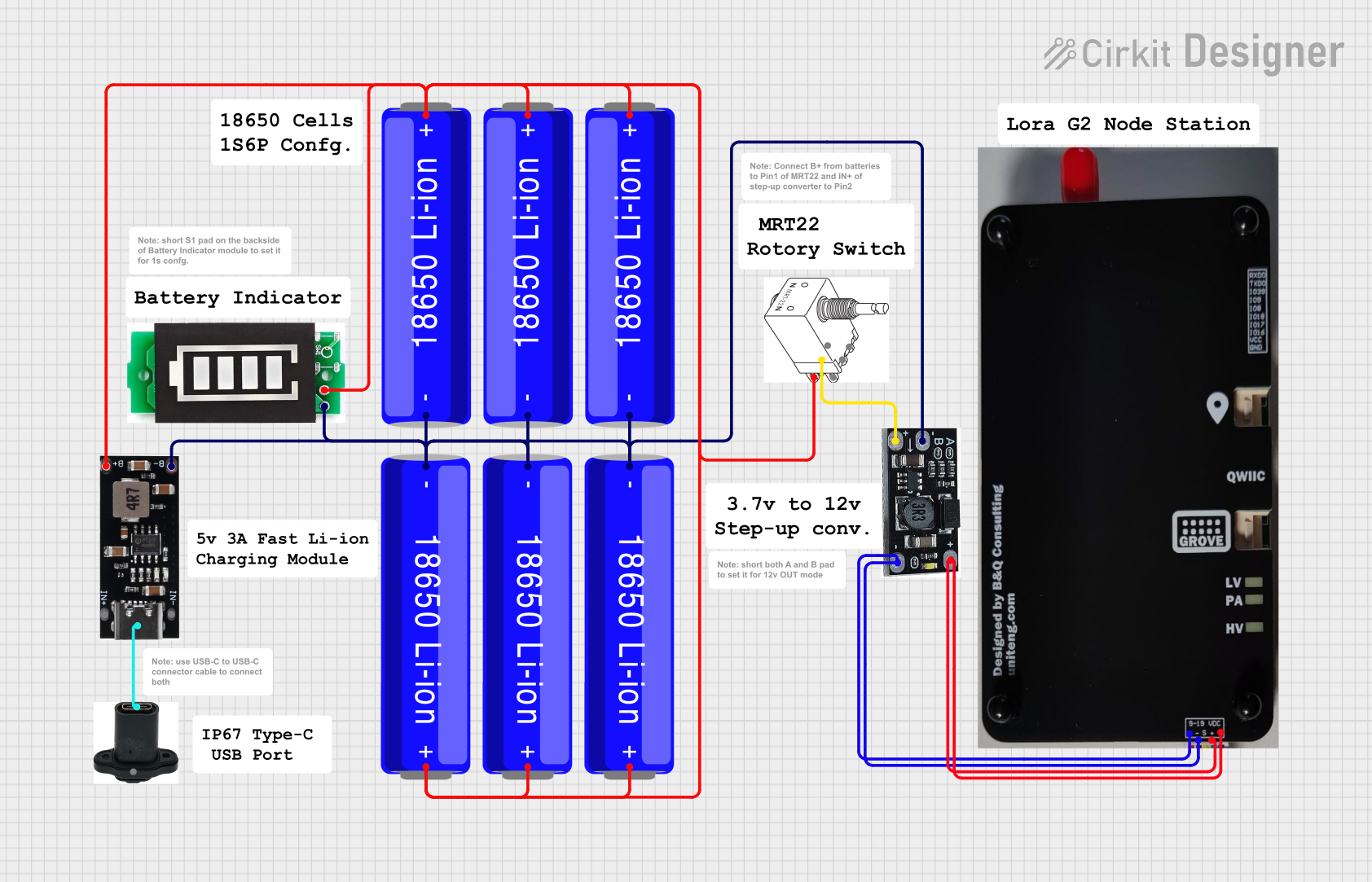
How to Use powerbank (20000mAh): Examples, Pinouts, and Specs

 Design with powerbank (20000mAh) in Cirkit Designer
Design with powerbank (20000mAh) in Cirkit DesignerIntroduction
The Romoss Powerbank (20000mAh) is a portable battery pack designed to charge electronic devices such as smartphones, tablets, and other USB-powered gadgets on the go. With its high capacity of 20000mAh, it provides multiple charging cycles for most devices, making it an essential accessory for travelers, commuters, and anyone needing reliable power backup.
Explore Projects Built with powerbank (20000mAh)

 Open Project in Cirkit Designer
Open Project in Cirkit Designer
 Open Project in Cirkit Designer
Open Project in Cirkit Designer
 Open Project in Cirkit Designer
Open Project in Cirkit Designer
 Open Project in Cirkit Designer
Open Project in Cirkit DesignerExplore Projects Built with powerbank (20000mAh)

 Open Project in Cirkit Designer
Open Project in Cirkit Designer
 Open Project in Cirkit Designer
Open Project in Cirkit Designer
 Open Project in Cirkit Designer
Open Project in Cirkit Designer
 Open Project in Cirkit Designer
Open Project in Cirkit DesignerCommon Applications and Use Cases
- Charging smartphones, tablets, and smartwatches during travel.
- Providing backup power for USB-powered devices like Bluetooth headphones, cameras, and portable speakers.
- Emergency power supply during power outages.
- Supporting outdoor activities such as camping or hiking where access to power outlets is limited.
Technical Specifications
The following table outlines the key technical details of the Romoss Powerbank (20000mAh):
| Specification | Details |
|---|---|
| Manufacturer | Romoss |
| Part ID | Powerbank |
| Battery Capacity | 20000mAh |
| Input Ports | Micro-USB, USB-C |
| Output Ports | 2 x USB-A, 1 x USB-C |
| Input Voltage/Current | 5V/2.1A (Micro-USB), 5V/3A (USB-C) |
| Output Voltage/Current | USB-A: 5V/2.1A (Max), USB-C: 5V/3A (Max) |
| Dimensions | 160mm x 80mm x 22mm |
| Weight | 450g |
| Charging Time | ~6-8 hours (using 5V/2.1A input) |
| Safety Features | Overcharge protection, short-circuit protection, temperature control |
Pin Configuration and Descriptions
The Romoss Powerbank does not have traditional pins but features input and output ports. The table below describes the ports:
| Port | Type | Description |
|---|---|---|
| Micro-USB | Input | Used to charge the powerbank (5V/2.1A). |
| USB-C | Input/Output | Dual-purpose port for charging the powerbank or powering devices (5V/3A). |
| USB-A (x2) | Output | Standard USB ports for charging devices (5V/2.1A max per port). |
Usage Instructions
How to Use the Powerbank
Charging the Powerbank:
- Connect the Micro-USB or USB-C input port to a power source (e.g., wall adapter or computer) using the appropriate cable.
- Ensure the power source provides at least 5V/2.1A for optimal charging speed.
- The LED indicators on the powerbank will light up to show the charging progress.
Charging Devices:
- Connect your device to one of the USB-A or USB-C output ports using a compatible charging cable.
- The powerbank will automatically start supplying power to the connected device.
- Monitor the LED indicators to ensure the powerbank has sufficient charge.
Checking Battery Level:
- Press the power button on the powerbank to activate the LED indicators.
- The number of lit LEDs corresponds to the remaining battery level:
- 4 LEDs: 75-100%
- 3 LEDs: 50-75%
- 2 LEDs: 25-50%
- 1 LED: 0-25%
Important Considerations and Best Practices
- Use high-quality charging cables to ensure efficient power transfer and avoid damage to devices.
- Avoid exposing the powerbank to extreme temperatures (below 0°C or above 45°C).
- Do not use the powerbank while it is being charged to prevent overheating.
- Disconnect the powerbank from the power source once it is fully charged to prolong battery life.
- Store the powerbank in a cool, dry place when not in use for extended periods.
Arduino UNO Compatibility
While the Romoss Powerbank is not specifically designed for Arduino projects, it can be used to power an Arduino UNO or similar microcontroller via the USB-A output port. Below is an example of how to connect and use the powerbank with an Arduino UNO:
Example Code
// This example demonstrates powering an Arduino UNO using a Romoss Powerbank.
// The Arduino UNO is connected to the powerbank via the USB cable.
void setup() {
// Initialize the onboard LED pin as an output
pinMode(LED_BUILTIN, OUTPUT);
}
void loop() {
// Blink the onboard LED to confirm the Arduino is powered
digitalWrite(LED_BUILTIN, HIGH); // Turn the LED on
delay(1000); // Wait for 1 second
digitalWrite(LED_BUILTIN, LOW); // Turn the LED off
delay(1000); // Wait for 1 second
}
Troubleshooting and FAQs
Common Issues and Solutions
| Issue | Possible Cause | Solution |
|---|---|---|
| Powerbank does not charge devices. | Insufficient charge in the powerbank. | Check the LED indicators and recharge the powerbank if necessary. |
| Devices charge slowly. | Using a low-quality or incompatible cable. | Use a high-quality cable that supports the required current. |
| Powerbank does not charge. | Faulty input cable or power source. | Test with a different cable or power adapter. |
| Powerbank overheats during use. | Using the powerbank while charging. | Avoid using the powerbank while it is being charged. |
| LED indicators do not light up. | Powerbank is completely discharged. | Recharge the powerbank for at least 30 minutes before checking the LEDs. |
FAQs
How many times can the powerbank charge my smartphone?
- The number of charges depends on your smartphone's battery capacity. For example, a 3000mAh phone can be charged approximately 5-6 times.
Can I charge multiple devices simultaneously?
- Yes, the powerbank supports charging multiple devices at the same time via its USB-A and USB-C ports. However, the total output current should not exceed the maximum rating.
Is the powerbank safe to use during air travel?
- Yes, the Romoss Powerbank (20000mAh) complies with airline regulations for carry-on batteries. Always check with your airline for specific guidelines.
How long does it take to fully charge the powerbank?
- It takes approximately 6-8 hours to fully charge the powerbank using a 5V/2.1A input.
By following this documentation, users can maximize the performance and lifespan of their Romoss Powerbank (20000mAh).